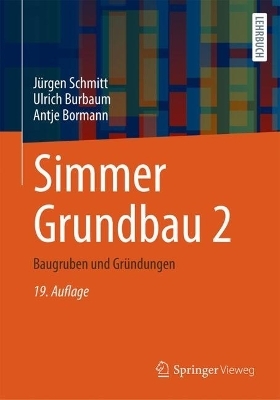
Composition, Deep Structure and Evolution of Continents
Elsevier Science Ltd (Verlag)
978-0-444-50309-1 (ISBN)
- Titel ist leider vergriffen;
keine Neuauflage - Artikel merken
The ensemble of manuscripts presented in this special volume captures the stimulating cross-disciplinary dialogue from the International Symposium on Deep Structure, Composition, and Evolution of Continents, Harvard University, Cambridge, Massachusetts, 15-17 October 1997. It will provide an update on recent research developments and serve as a starting point for research of the many outstanding issues.
After its formation at mid-oceanic spreading centers, oceanic lithosphere cools, thickens, and subsides, until it subducts into the deep mantle beneath convergent margins. As a result of this continuous recycling process oceanic lithosphere is typically less than 200 million years old (the global average is about 80 Myr).
A comprehensive, multi-disciplinary study of continents involves a wide range of length scales: tiny rock samples and diamond inclusions may yield isotope and trace element signatures diagnostic for the formation age and evolution of (parts of) cratons, while geophysical techniques (e.g., seismic and electromagnetic imaging) constrain variations of elastic and conductive properties over length scales ranging from several to many thousand kilometers. Integrating and reconciling this information is far from trivial and, as several papers in this volume document, the relationships between, for instance, formation age and tectonic behavior on the one hand and the seismic signature, heat flow, and petrology on the other may not be uniform but may vary both within as well as between cratons. These observations complicate attempts to determine the variations of one particular observable (e.g., heat flow, lithosphere thickness) as a function of another (e.g., crustal age) on the basis of global data compilations and tectonic regionalizations.
Important conclusions of the work presented here are that (1) continental deformation, for instance shortening, is not restricted to the crust but also involves the lithospheric mantle; (2) the high wavespeed part of continental lithospheric mantle is probably thinner than inferred previously from vertically travelling body waves or form global surface-wave models; and (3) the seismic signature of ancient continents is more complex than expected from a uniform relationship with crustal age.
Preface. Seismic imaging of lithospheric discontinuities and continental evolution (M.G. Bostock). The deep structure of the Australian continent from surface wave tomography (F.J. Simons et al.). Velocity structure of the continental upper mantle: evidence from southern Africa (K. Priestley). Imaging the continental upper mantle using electromagnetic methods (A.G. Jones). Heat flow and the structure of Precambrian lithosphere (A.A. Nyblade). The thermal structure and thickness of continental roots (C. Jaupart, J.C. Mareschal). Stability and dynamics of the continental tectosphere (S.S. Shapiro et al.). The continental tectosphere and Earth's long-wavelength gravity field (S.S. Shapiro et al.). The evolution of continental roots in numerical thermo-chemical mantle convection models including differentiation by partial melting (J.H. de Smet et al.). The age of continental roots (D.G. Pearson). Nature of the mantle roots beneath the North American craton: mantle xenolith evidence from Somerset Island kimberlites (S.S. Schmidberger, D. Francis). Evidence from mantle xenoliths for relatively thin (< 100 km) continental lithosphere below the Phanerozoic crust of southernmost South America (C.R. Stern et al.).
Erosion of lithospheric mantle beneath the East African Rift system: geochemical evidence from the Kivu volcanic province (T. Furman, D. Graham). Trace element compositions of minerals in garnet and spinel peridotite xenoliths from the Vitim volcanic field, Transbaikalia, eastern Siberia (S.M. Glaser et al.). Growth of subcontinental lithosphere: evidence from repeated dike injections in the Balmuccia Iherzolite massif, Italian Alps (S.B. Mukasa, J.W. Shervais). Evidence for Archean ocean crust with low high field strength element signature from diamondiferous eclogite xenoliths (D.E. Jacob, S.F. Foley). Author index. Subject index.
| Erscheint lt. Verlag | 22.10.1999 |
|---|---|
| Reihe/Serie | Developments in Geotectonics |
| Verlagsort | Oxford |
| Sprache | englisch |
| Gewicht | 940 g |
| Themenwelt | Naturwissenschaften ► Geowissenschaften ► Geologie |
| ISBN-10 | 0-444-50309-9 / 0444503099 |
| ISBN-13 | 978-0-444-50309-1 / 9780444503091 |
| Zustand | Neuware |
| Informationen gemäß Produktsicherheitsverordnung (GPSR) | |
| Haben Sie eine Frage zum Produkt? |
aus dem Bereich


